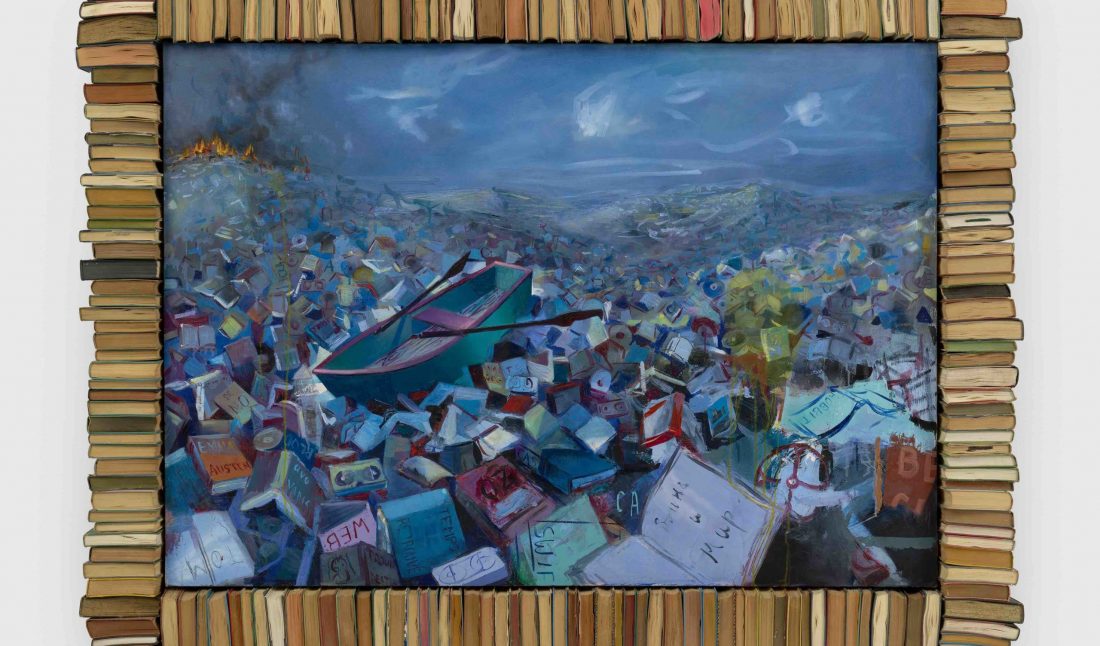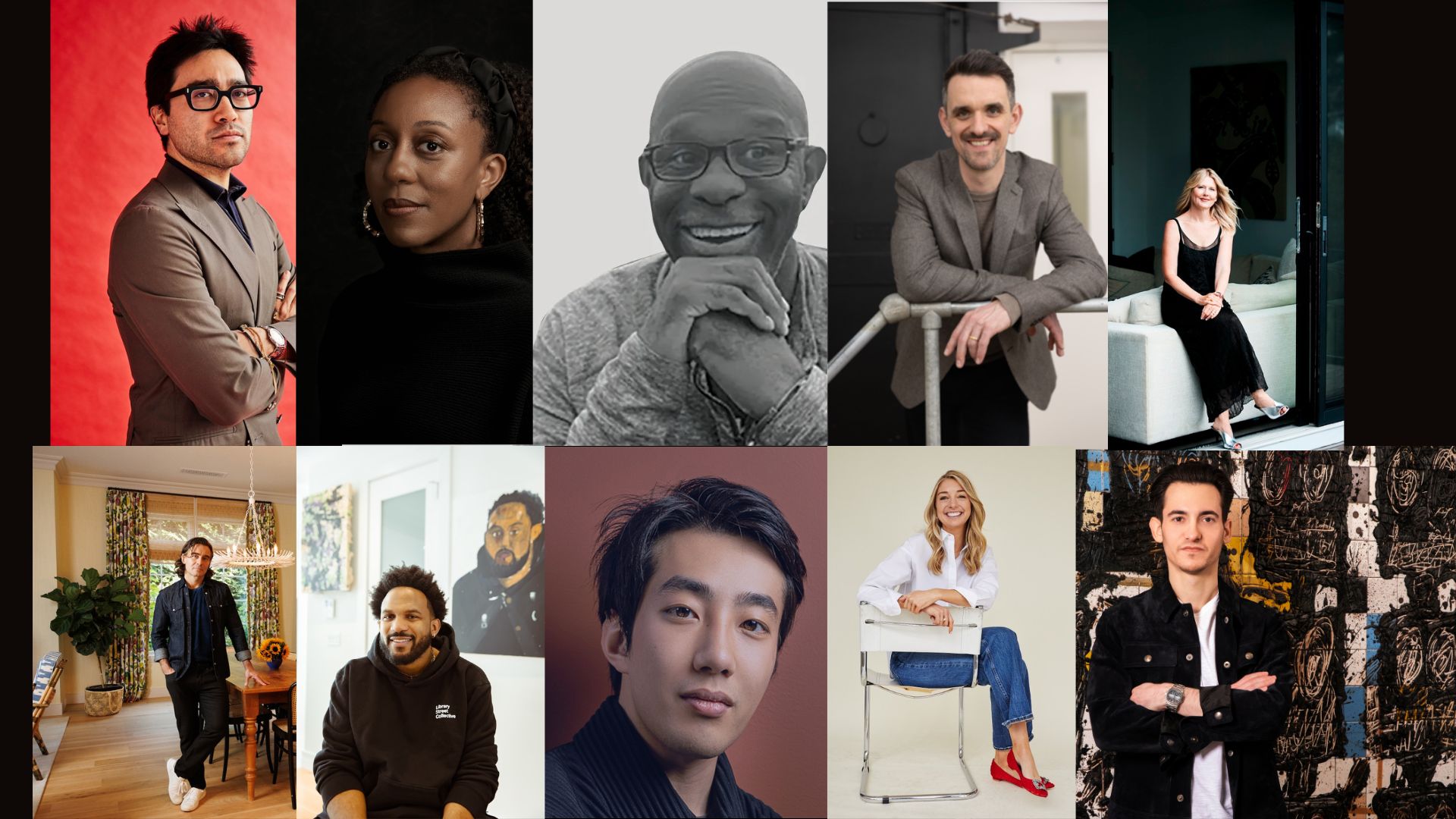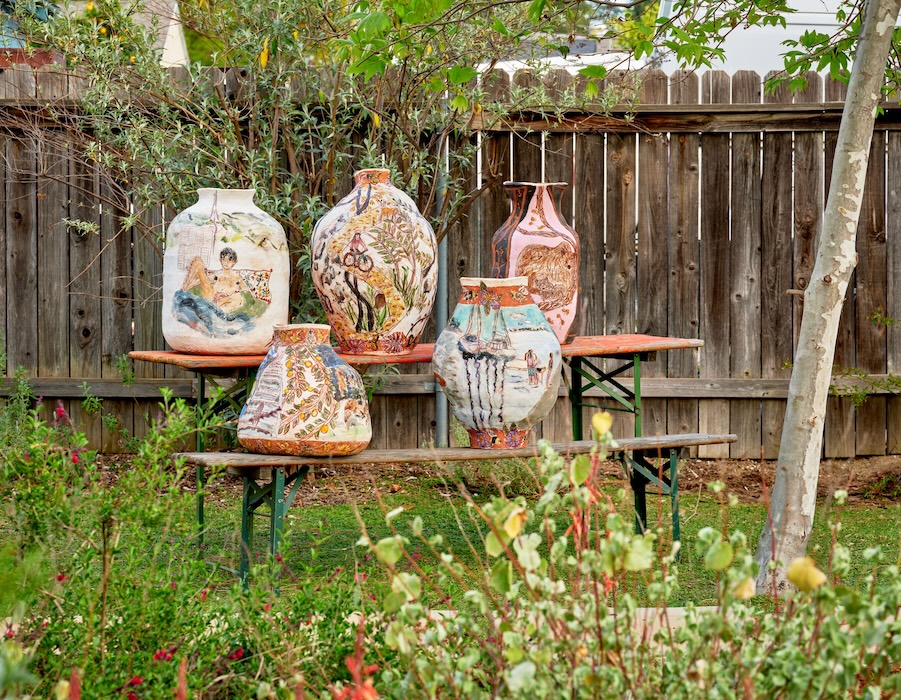This fall, the work of Frank Moore is on view at David Zwirner through October 23. As part of the ongoing “More Life” series at the gallery, it marks the 40-year anniversary of the CDC’s first reporting of what would eventually be known as AIDS. The exhibition was curated by the Pulitzer Prize–winning writer Hilton Als, a dear friend of the late artist and activist.
Moore’s colorful paintings are filled with stories and ideas, encompassing a world that extends into the elaborately created frames at their borders. Inspired by the natural environment he was immersed in as a child and continued to cultivate in his own gardens, he did not separate his life from his work—whether it was painting, performance, or activism. His work was political and personal, a space in which to effect change. He was a founding member of Visual AIDS and helped to launch the Red Ribbon Project in 1991, just a few years after being diagnosed with AIDS. He passed, sadly far too young, in 2002.
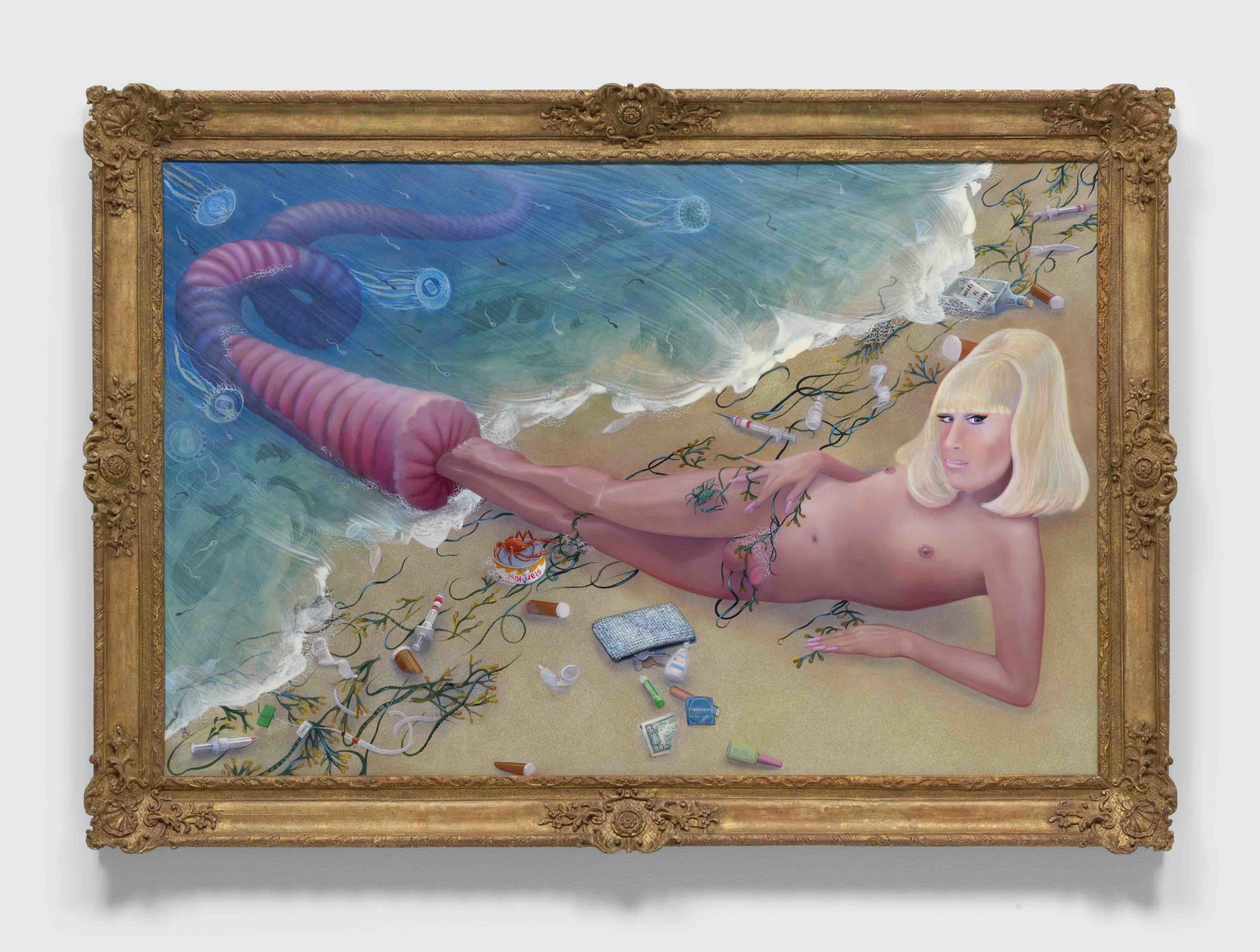 Frank Moore, “Birth of Venus,” 1993, © Frank Moore, courtesy of the Gesso Foundation, New York.
Frank Moore, “Birth of Venus,” 1993, © Frank Moore, courtesy of the Gesso Foundation, New York.
Als spoke with Whitewall about Moore’s ability to connect emotionally and politically in his practice, as well as the impact his art continues to have.
WHITEWALL: What was the starting point for curating this exhibition?
HILTON ALS: David Leiber, partner at David Zwirner, remembered a lecture I gave on a rainy night long ago after Frank died, where I talked about the man and the art. David said that he was very touched by the lecture and never forgot it; when this opportunity to show Frank’s work came up, David very kindly contacted me.
WW: Given that this show is part of the larger series “More Life,” what works of his did you think were important to include?
HA: I think all of Frank’s work is important; as with any important artist, you want to see their development, and what their interests were at a given time, especially when the artist dies young, like Frank. For me, it’s the piece Arena that speaks very directly to me about a terrible time, a kind of emotional, spiritual, and political cul-de-sac we couldn’t find our way out of at that time because there was no way out at that time.
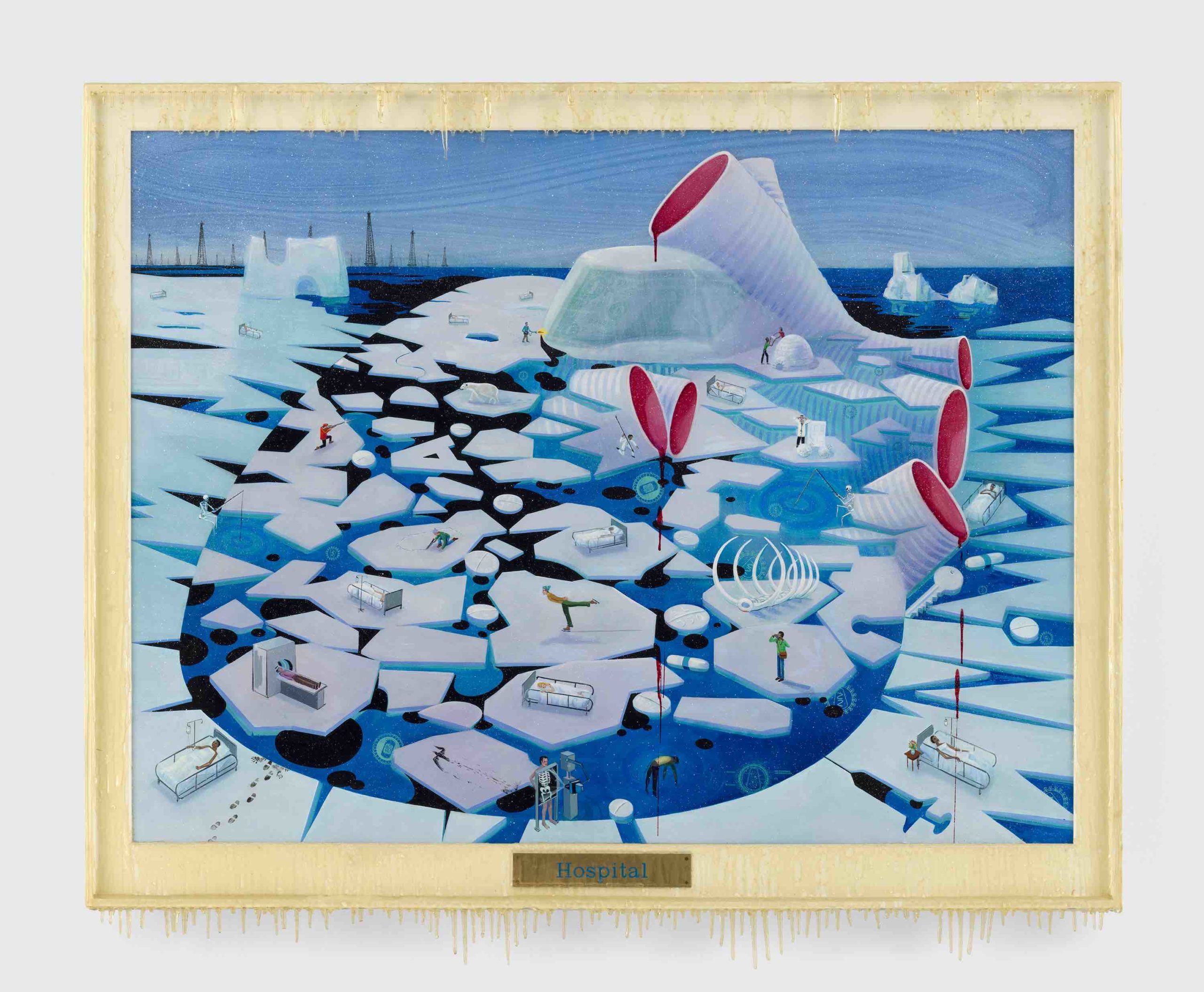 Frank Moore, “Hospital,” 1992, © Frank Moore, courtesy of the Gesso Foundation, New York.
Frank Moore, “Hospital,” 1992, © Frank Moore, courtesy of the Gesso Foundation, New York.
WW: How do we see his fascination with nature, from a childhood of summers spent in the Adirondacks to a home upstate with a beloved garden, play out in his paintings?
HA: Tremendously! Look at the work! Did Frank ever make a painting in which nature didn’t play a role? I’d be hard-pressed to think of a work that didn’t describe his love of the natural world, and time’s erosions, which nature embraces before becoming something else again.
WW: The frames for his works are incredible. Can you tell us about how he thought about the framing process?
HA: The frames, for sure, were part of the overall work. Indeed, Frank didn’t think of the frames as separate from the image proper; they were meant to be viewed as part of the image because they were part of the image.
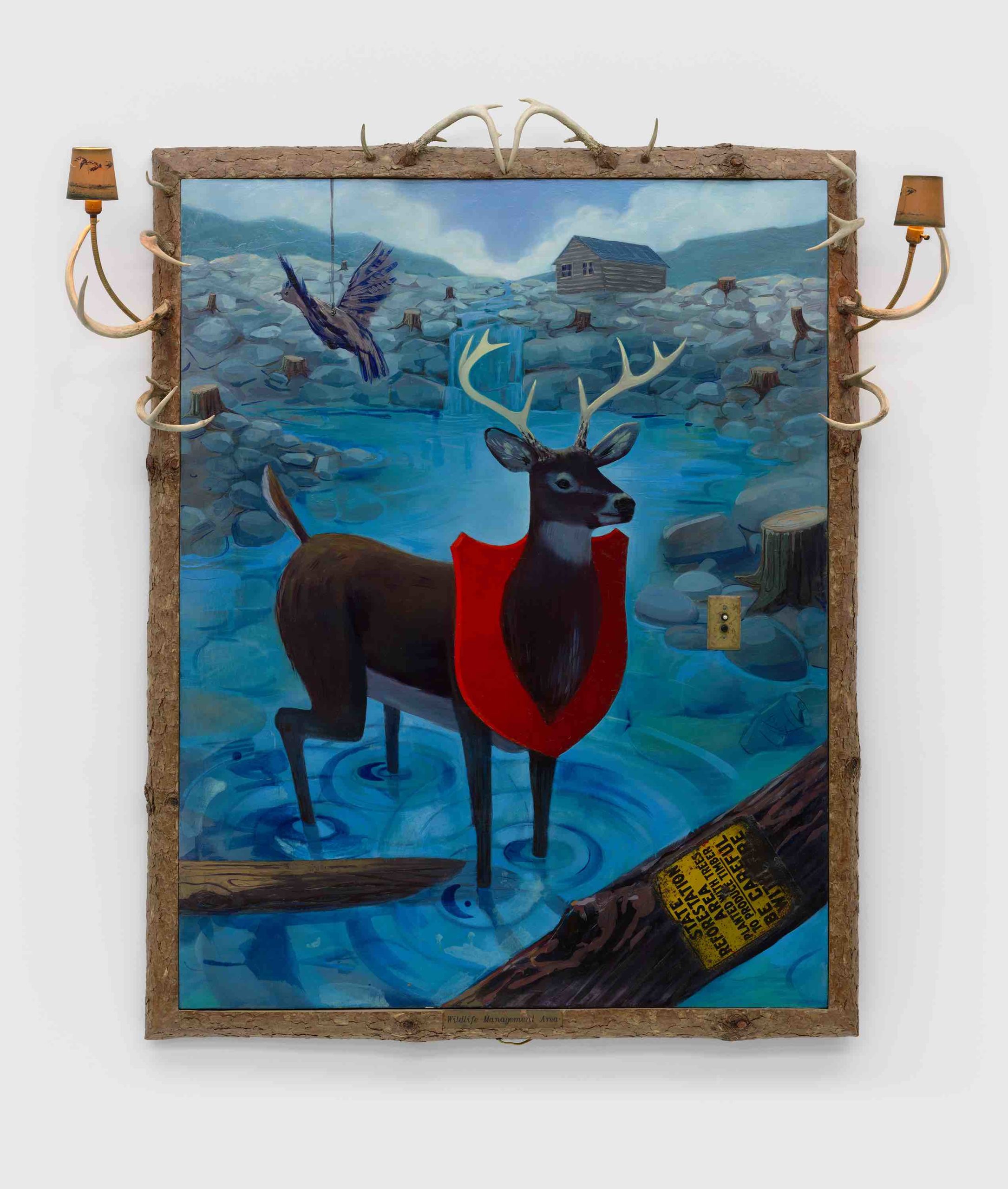 Frank Moore, “Wildlife Management Area,” 1990, © Frank Moore, courtesy of the Gesso Foundation, New York.
Frank Moore, “Wildlife Management Area,” 1990, © Frank Moore, courtesy of the Gesso Foundation, New York.
WW: How can we see Moore using his practice as a journal or diary?
HA: I always thought the paintings were a kind of record of where Frank had been emotionally and politically, and where he wanted to go, which was out into the larger AIDS-free world that, unfortunately, we had already wrecked. When I see global warming at work, I see Frank, and his disappointment in our lack of love for our planet, and our love of profit over the environment.
WW: Moore believed that art can effect change in society. What role did he see himself playing as an artist and activist?
HA: I think you said it—if you are an artist and activist, then you are already effecting change. Whatever enters your body is political, Adrienne Rich said, and I tend to agree.
WW: How did his work as an activist impact his practice?
HA: There was no separation between the two. Frank’s brush was an instrument of his activism, as was actual marching, protesting, and so on.
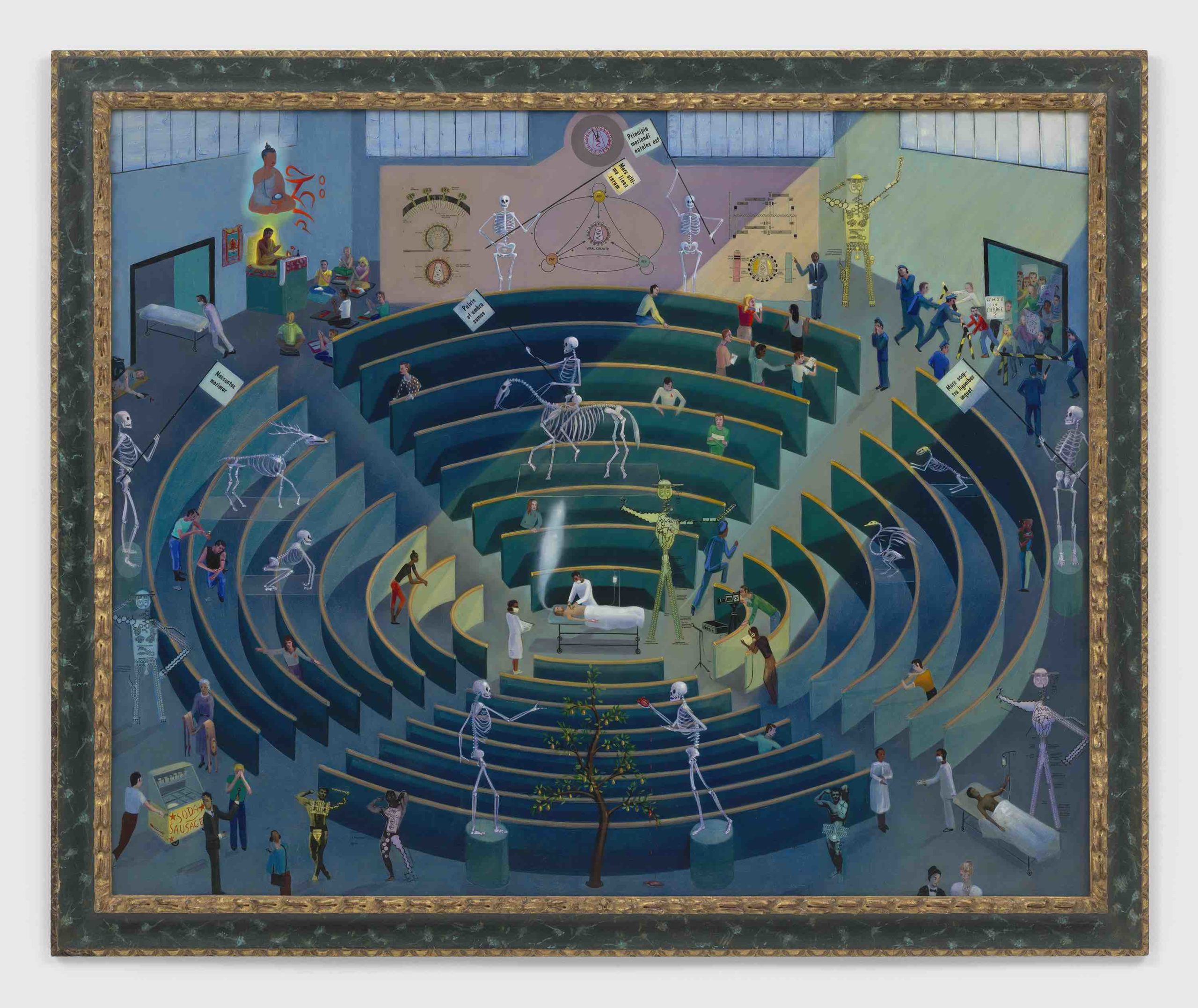 Frank Moore, “Arena,” 1992, © Frank Moore, courtesy of the Gesso Foundation, New York.
Frank Moore, “Arena,” 1992, © Frank Moore, courtesy of the Gesso Foundation, New York.
WW: He described modern life as a site of “great, but toxic, beauty.” How does Moore’s work capture that tension?
HA: I think you see it in the work. Look at the picture of Lady Bunny. And look at his fashioned Norman Rockwell painting. They say it all. But then again, Frank never stopped saying it. I think he was heartbroken about synthetic waste, and our disregard of Mother Nature and future generations.
WW: These pieces feel incredibly fresh. How do you see Moore’s work, nearly two decades since his passing, finding relevancy and meaning today?
HA: I think they’ve already found it. Just look at the people looking at Frank for the first time. He’s changing lives—again. I just wish he were here to feel his effect.






